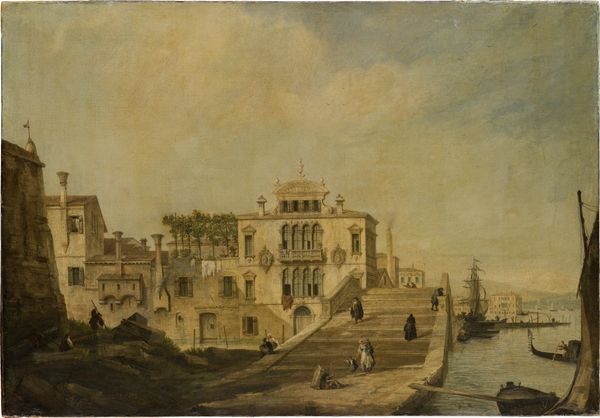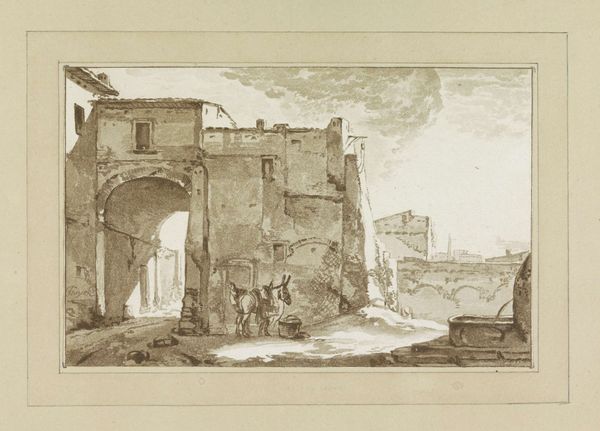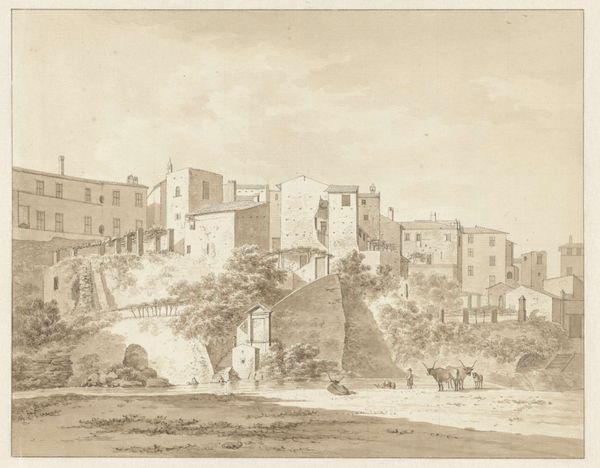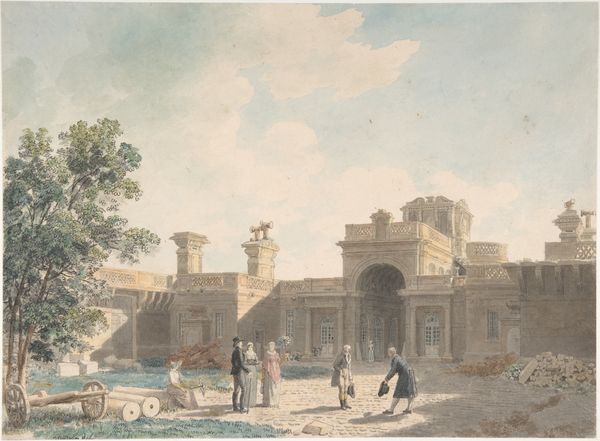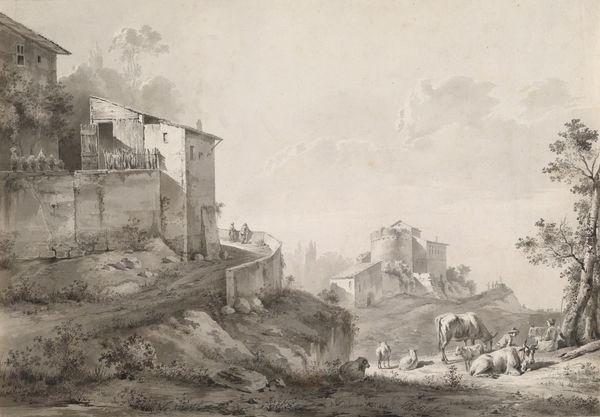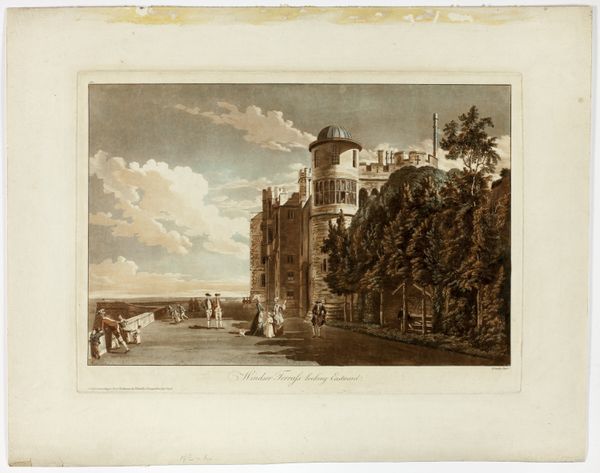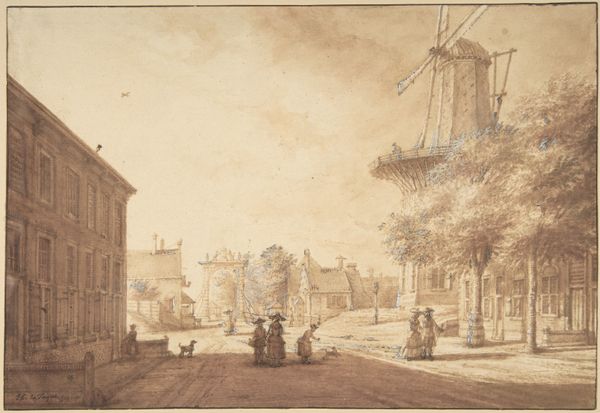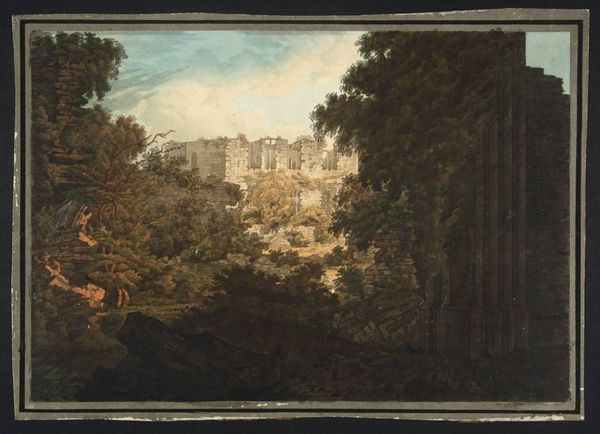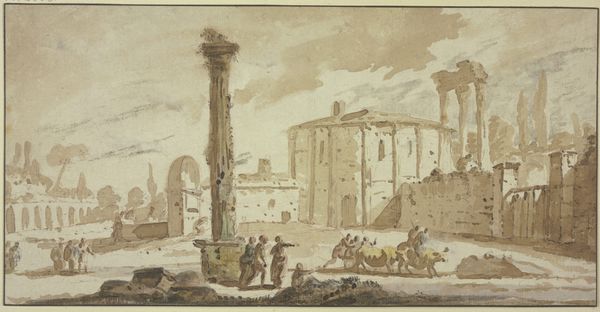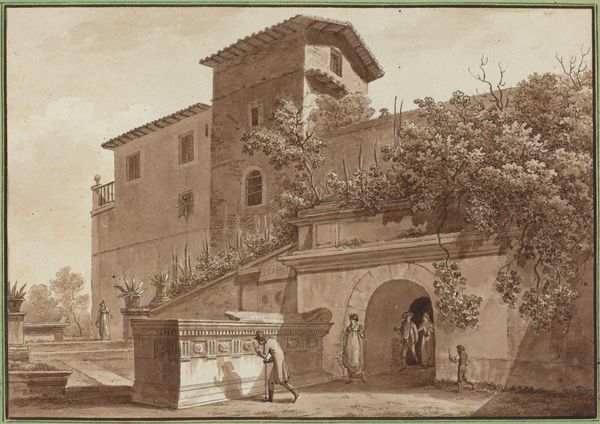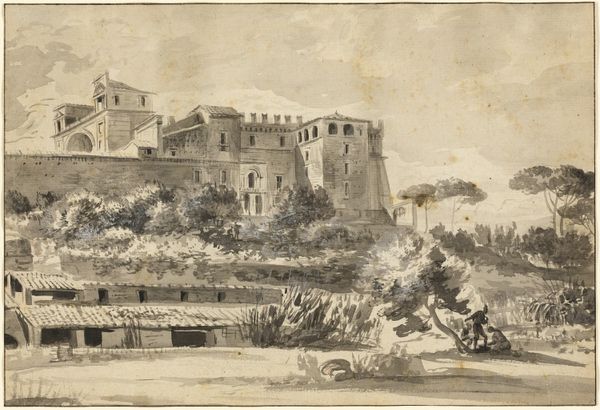
Dimensions: frame: 645 x 820 x 42 mm support: 435 x 591 mm
Copyright: CC-BY-NC-ND 4.0 DEED, Photo: Tate
Editor: This watercolor, "The Interior of the Colosseum" by William Pars, captures the iconic structure in ruins. I’m struck by the contrast between the crumbling walls and the prominent Christian cross. What’s your take on this interplay? Curator: It's a deliberate visual and symbolic juxtaposition. The Colosseum, once a symbol of Roman imperial power and pagan spectacle, is here framed within a Christian context. Pars highlights the Catholic church’s appropriation and re-sanctification of the space. How do you see that influencing the public perception? Editor: It reframes the narrative, doesn't it? From gladiatorial combat to a site of Christian pilgrimage, a complete transformation. Curator: Precisely. The image speaks to the Church's power to rewrite history and reshape cultural landscapes. Thanks to Pars, we see both the decay of empire and the rise of a new order. Editor: That’s a powerful statement about the role of institutions in shaping how we remember the past.
Comments
tate 8 months ago
⋮
http://www.tate.org.uk/art/artworks/pars-the-interior-of-the-colosseum-t04853
Join the conversation
Join millions of artists and users on Artera today and experience the ultimate creative platform.
tate 8 months ago
⋮
Pars was sent to Rome on a bursary by the Society of Dilettanti in 1775; he remained in Italy until his death from pleurisy seven years later. Although he had been a portrait painter from the start of his career, and remained one, he is now known almost exclusively for his work as a landscape watercolourist. In Italy he associated with the large group of English artists working in Rome, notably John 'Warwick' Smith, Francis Towne and Thomas Jones. This watercolour was a preliminary study for a more highly finished version made for sale to a patron. The Colosseum had been consecrated in 1750 as a memorial to the early Christians martyred there, and a chapel and Stations of the Cross erected round the interior. Gallery label, September 2004

